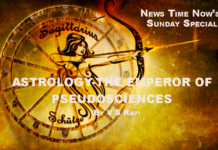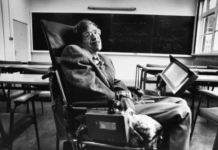History is replete with several examples of scientists stumbling upon some discovery by sheer accident.
There has been a great deal of speculation not only in academic circles but also among people not engaged in intellectual pursuits about the element of luck or chance involved in scientific discovery.
History is replete with several examples of scientists stumbling upon some discovery by sheer accident. There are a few popular stories, which because of their wide acceptance by all sections of people over the years, have acquired a legendary reputation. Such to name a few are the account of the fall of the apple which had led Newton to discover gravitation; the incident relating to Archimedes (he had been only trying to find a method to know whether a crown was made of pure gold or of a cheap alloy. However, while lowering himself in a public bath he watched the water overflowing and the concept of displacement flashed across his mind giving him a vital clue, which enabled him to discover a major law in hydrostatics.

Historians have of course humorously recorded that Archimedes rushed out into the streets of Athens, stark naked, shouting “eureka”; and the story relating to the kettle and James Watt (the behaviour of the lid of the kettle had given him the idea of the immense power that steam could generate). There are many more such equally interesting incidents in the history of science.
Let us examine to what extent does Serendipity, the art of looking for one thing but finding something else valuable by accident, play a significant role in science. The word “serendipity” is taken from a fairy tale of the “Three princes of Serendip” (Serendip is an ancient name of Sri Lanka) in which the princes were always making discoveries of things, they were not in search of by sagacity and chance.
When one reviews the history of science one comes across innumerable discoveries which can be attributed in some measure to serendipity. Christian Friedrich Schonbein, a German-Swiss chemist, had been asked by his wife not to enter the kitchen in his home in Basel, with the corrosive and foul smelling acids he had been experimenting with in the year 1845. But one day he entered the kitchen taking advantage of her absence. He also happened to spill some of the mixture and in panic wiped it off with the cotton apron of his wife which was readily available. He then put the apron to dry over the stove as he was anxious not to leave behind any evidence . Even though the apron did get dry, it also suddenly disappeared. The nitric acid mixture had combined with the cellulose present in the apron to produce nitrocellulose, a new explosive.

Another example of serendipitous success is the discovery of vulcanization by Charles Goodyear, the American inventor. Rubber in the natural state becomes soft and sticky on hot days and brittle and still on cold days. Goodyear was hoping to make a substance that would remain dry and flexible at all reasonable temperatures. He was unable to make any headway till one eventful day in 1939 when he spilled his chemical mixture accidentally on a hot stove. The substance he then peeled off was found to be flexible! The extra heat of the surface of the stove had led to vulcanization.

It is common knowledge that chemists take precautions to wash their hands at frequent intervals as they handle harmful chemicals. In the year 1879, Constantin Fahlberg a student of the American chemist Ira Remsen who had been experimenting with a compound happened to accidentally rub his lips with his unwashed hands. Some grains of the new compound which had a sweet taste had adhered to his fingers. This led to the discovery of saccharin.
 The Swiss chemist Albert Hoffman had a similar experience. He too like Fahlberg had applied some crystals to his lips accidentally and later experienced strange, nightmarish sensations. His investigation led to the discovery of LSD.
The Swiss chemist Albert Hoffman had a similar experience. He too like Fahlberg had applied some crystals to his lips accidentally and later experienced strange, nightmarish sensations. His investigation led to the discovery of LSD.
In 1819, the Danish physicist H.C. Oersted was carrying out an ordinary demonstration in a classroom. 
The passage of an electric current through a wire caused a jerk in the needle of compass nearby leading to the discovery of electromagnetism.
Most of the physicists at the end of the nineteenth century had been experimenting with cathode rays and Rontgen was no exception. He had kept a sheet of paper coated with Barium Platinocyanide in his laboratory, one day in 1895.
 When the apparatus, he had been working with was switched on, he noticed a glow on the paper. Thus X-rays happened to be discovered by Rontgen who was the first physicist, to get the Nobel Prize, in 1901.
When the apparatus, he had been working with was switched on, he noticed a glow on the paper. Thus X-rays happened to be discovered by Rontgen who was the first physicist, to get the Nobel Prize, in 1901.
Continued in part 2


















































